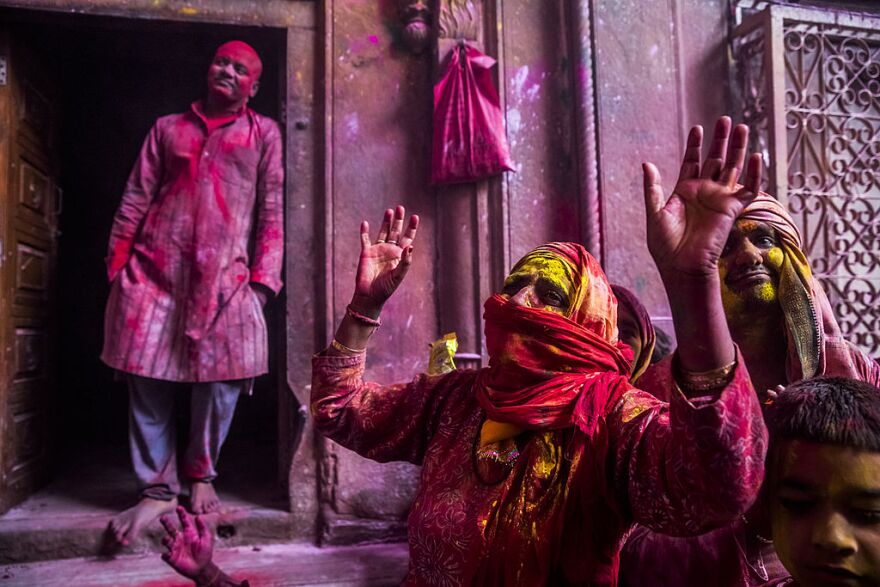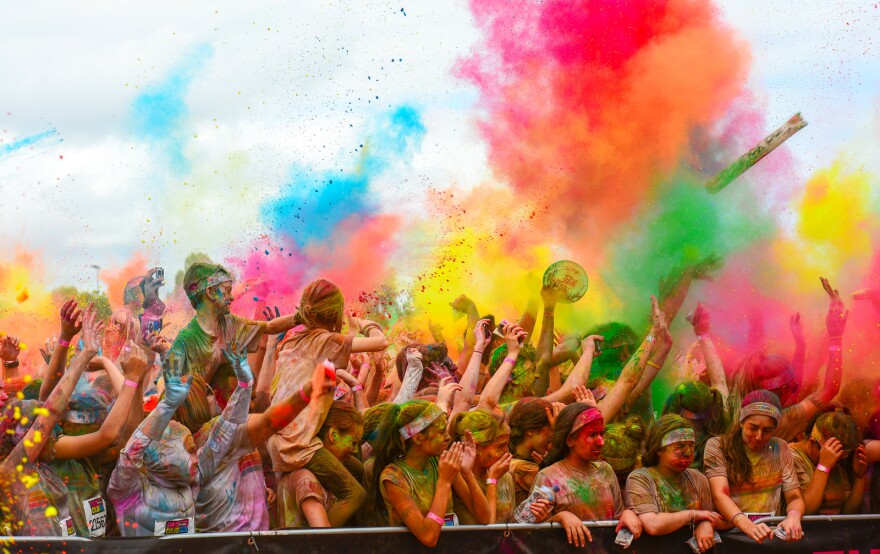Have you ever participated in a color run? You know the one where throughout the race organizers throw brightly pigmented paint, chalk or powder on participants and by the time they’re finished, they’re covered from head to toe in a cacophony of colors.
One will take place in Milwaukee Saturday at Veterans Park. While the event is a way for people have fun, and maybe raise money for a charity, the act of playing in color has religious and culture ties to India.

So here’s a holiday you may never have heard about: Holi.
Hindu people celebrate it in March to mark the arrival of spring and the playful relationship the Hindu God Lord Krishna had with his believers. People wake up early, rub a bit of oil in their hair and on their skin, put on clothes they don’t mind ruining and head out to play in paint, also called colour.
“The kids play, the people in the college age play, men and women there also. So everybody plays with the colour," Kishore Acharya says. He moved to the U.S. in 1972 to attend college. He’s originally from Calcutta and says he grew up celebrating Holi.
Acharya says traditionally, people in India interact only with those of the same social status, and when it comes to men and women, gender roles are clear. But not on this day, according to Deepti Dhingra.
“So the cultural significance of Holi in India is that it is a great equalizer. Everybody participates, irrespective of their social standing, irrespective of their religion. It’s like a big party with food and music and dance and it’s very, very fun,” she says.

Dhingra says that blending of people and celebrating are also what she sees happening these days with color runs.
How does she feel about a different culture using part of hers and her religion? She says it’s the way of the world. “As people who emigrated from India have made a home in this country like I have and you become integrated into the society, your tastes in everything that you do spills over to people. So I take it as the same as 30 years ago when I came, chutney was probably not a word that a lot of people knew and how it has become so common, right,” Dhingra says.
Dhingra says she’s happy people get to experience a little of her culture even though they likely have no idea about the origin of color runs.

